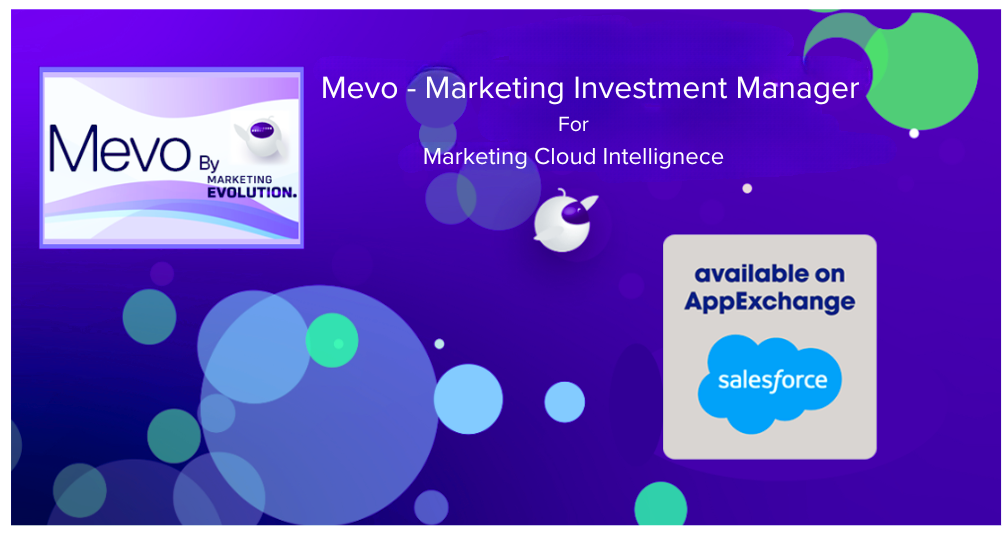What is Marketing Attribution? A Complete Guide
Today’s marketers rely on multi-channel strategies to carry out marketing campaigns, both online and offline. While this practice enables marketers to customize the customer journey along every step, it also presents unique challenges once it’s time to analyze the overall impact of a particular campaign on marketing ROI.
This is particularly true for B2B marketing attribution, which becomes even more complex due to the longer sales cycles and multiple touchpoints. Therefore, marketers must develop comprehensive generative attribution models considering all channels and touchpoints, to accurately measure and optimize marketing investments and the campaign's effectiveness.

What is Marketing Attribution?
The Short Definition: Put simply, marketing attribution is the analytical science of determining which marketing tactics are contributing to sales or conversions.
The Long Definition: Marketing attribution is the practice of evaluating the marketing touchpoints a consumer encounters on their path to purchase. The goal of attribution is determining which channels and messages impacted the decision to convert or take the desired next step. There are several popular attribution models used by marketers today, such as B2B marketing attribution, multi-touch attribution model, lift studies, time decay, and more. The insights these models provide into how, where, and when a consumer interacts with brand messages allow marketing teams to alter and customize campaigns to meet the specific desires of individual consumers, thus improving marketing ROI.
Why is Marketing Attribution Important?
Advanced marketing attribution programs require marketing teams to aggregate and normalize consumer data across channels to ensure each interaction is properly weighted. For example, if a consumer is exposed to a display ad and an email campaign but only converts after seeing a special promotion in the email, marketers can note that this piece of collateral played a bigger role in driving the sale than the display ad. They can then devote more resources to creating targeted email campaigns.
To achieve the level of data granularity required for effective generative attribution, marketing teams need advanced marketing analytics platforms that can accurately and efficiently distill big data into person-level insights that can be used for in-campaign optimizations.
What are the Benefits of Marketing Attribution?
Advanced attribution models, like B2B marketing attribution, used to be time- and resource-intensive to get right, especially complex models that evaluated a variety of datasets for online and offline marketing campaigns. However, this entire process has now been automated with generative AI. When done effectively, attribution brings a myriad of benefits, including:
Optimized Marketing Spend
Generative attribution models give marketers insights into how marketing dollars are best spent by showing touchpoints that earn the most engagement. This allows marketing teams to adjust the budget and media spend accordingly as advertising campaigns are still running.
Increased ROI
Effective generative attribution enables marketers to reach the right consumer at the right time with the right message – leading to increased conversions and higher marketing ROI.
Improved Personalization
Marketers can use generative attribution data to understand the messaging and channels preferred by individual customers for more effective targeting throughout the customer journey, including personal outreach activities for B2B marketing and sales organizations.
Improve Product Development
Person-level attribution allows marketers to understand the needs of their consumers better. These insights can then be referenced when making updates to the product to target the functionality consumers want.
Optimized Creative
Generative attribution models that can evaluate the creative elements of a campaign allow marketers to hone messaging and visual elements and better understand how and when to communicate with users.
What are the Common Marketing Attribution Challenges and Mistakes?
While B2C and B2B marketing attribution can offer many benefits, there are a host of common mistakes that can result in misattribution, obscuring the success of campaigns for marketers.
To ensure they get the most accurate data that reflects their users’ customer journey, marketers should avoid:
Correlation-Based Bias
Attribution models can be subject to correlation-based biases when analyzing the customer journey, causing it to look like one event cause another, when it may not have.
In-Market Bias
This refers to consumers who may have been in the market to buy the product and would have purchased it whether they had seen the ad. However, the ad gets the attribution for converting this user.
Cheap Inventory Bias
This gives an inaccurate view of how media is performing, making lower-cost media perform better due to the natural conversion rate for the targeted consumers when the ads may not have played a role.
Each of the biases threatens to have marketers make optimizations in favor of the less effective messaging, causing immense damage to ROI.
Digital Signal Bias
This occurs when generative attribution models do not factor in the relationship between online activity and offline sales. Marketers who make online and offline sales must make optimization decisions based on online and offline data, not only what they can trace digitally.
Brand and Behavior
Attribution models can often overlook the relationship between brand perception and consumer behavior or will only look at them at a trend regression level.
Marketers must ensure their attribution models can detect relationships between brand-building initiatives and conversions. Not understanding how their generative attribution model measures branding impact is a common and detrimental mistake, leading marketers to make decisions based on incomplete recommendations that devalue brand building.
Missing Message Signal
Creativity and messaging are as important to consumers as the medium they see your ad. One common attribution mistake is evaluating creativity in aggregate and determining that one message is ineffective when, in reality, it would be effective for a smaller, more targeted audience. This emphasizes the importance of person-level analytics.
What is the Role of Generative AI in B2B Marketing Attribution?
Generative AI provides valuable insights and data-driven marketing analysis to marketers. AI algorithms accurately attribute campaign success to specific actions and touchpoints. This helps understand which marketing and sales outreach efforts contribute the most to lead generation, customer acquisition, and revenue. Through generative AI, marketers optimize strategies, identify effective channels, and make data-backed decisions for better results. Moreover, generative AI empowers marketers to measure impact, allocate resources efficiently, and improve ROI. This leads to marketing success while ensuring marketing efforts are quantified and credited along the customer journey to conversion. Sales organizations can benefit from planning outreach activities with more qualified leads.
How Do You Measure Marketing Attribution?
Marketing attribution can be measured through models that weigh different aspects of the campaign to determine which advertisements were most effective. Numerous models are available, and many have clear challenges, such as combining offline and online data. Choosing the right model is paramount to accurately measuring the effectiveness of your campaigns to allocate budget or determine the next steps.
What is a Marketing Attribution Model?
Marketing attribution models, like B2B marketing attribution, assign value to marketing campaigns through statistical analysis at the user level. This is in contrast to models such as marketing mix modeling that use aggregate data. This person-centric approach is why attribution models are more typically applied to digital campaigns than those conducted offline, such as print advertising. However, many models are now challenged with eliminating cookies in digital advertising, as seen with Google Chrome’s recent changes. Each generative attribution model relies on different analytical techniques, which will be explored later. Newer (generative AI) techniques address digital measurement challenges.
The most effective attribution models will provide insight into:
- Which messages were a consumer or potential B2B customer exposed to, and on what channel
- Which touchpoint had the greatest impact on their decision to purchase
- The role brand perception played in the decision to convert
- The role of message sequencing
- Which messaging gets the best results from each consumer or potential buyer
- The impact of external factors (e.g., how gas prices affect car sales)

What are the Different Types of Marketing Attribution Models?
As noted earlier, two main attribution categories are single-touch and multi-touch. Within these categories, there are several core models which each provide different insights. These are all becoming more challenging due to privacy regulations and the elimination of cookies in digital media. Let’s look at the differences between each:
Single-Touch Attribution Model
- First-Touch Attribution: First-touch attribution assumes that the consumer chose to convert after the first advertisement they encountered. Therefore, it gives full attribution to this first touchpoint, regardless of additional messaging seen subsequently.
- Last-Touch Attribution: Conversely, last-touch attribution gives full attribution credit to the last touchpoint the consumer interacted with before making the purchase without accounting for prior engagements.
Each method fails to factor in the broader customer journey, so marketers should avoid relying solely on these methods.
Multi-Touch Attribution Model
Multi-touch attribution models look at all touchpoints engaged by the consumer or B2B potential customer leading up to a purchase. As a result, these are considered more accurate models. Depending on which multi-touch attribution model you use, they assign value to channels differently. For example, some assign value based on when a consumer interacted with a touchpoint relative to the conversion, while others weigh all touchpoints equally.
These models are largely differentiated by how they divide credit between touchpoints on the path to purchase.
- Linear: Linear attribution records each touchpoint engaged with by the consumer leading to purchase. It weighs these interactions equally, giving each message the same amount of credit toward driving the conversion.
- U-Shaped: Unlike linear attribution, the U-Shaped attribution model scores engagements separately, noting that some are more impactful than others on the path to purchase. Specifically, the first and lead conversion touches are each credited with 40 percent of the responsibility for the lead. The other 20 percent is divided between the first and lead conversion touchpoints.
- Time Decay: The time decay model also weighs each touchpoint differently on the path to purchase. This model gives the touchpoints engaged with closer to the conversion more weight than those engaged with early on, assuming those had a greater impact on the sale.
- W-Shaped: This model uses the same idea as the U-Shaped model. However, it includes one more core touchpoint – the opportunity stage. Thus, for the W-shaped model, the touchpoints credited with the first touch, lead conversion, and opportunity creation receive 30 percent of the credit. The remaining 10 percent is divided among the additional engagements.
Choosing the Right Attribution Model for Your Organization
Marketers need to make several considerations when selecting which generative attribution model to rely on in their organization. First, consider the type of sales cycle you use, how long it typically runs, and how much is done online or offline. E-commerce sites may not have to factor in offline conversions, but most major retailers will. B2B brands must understand the combined impact of marketing and sales outreach activities.
It is also important to consider how much of your marketing efforts are focused on offline methods such as print, broadcast, and television. Organizations that place great value in these mediums must choose a marketing attribution model and platform that can correlate and normalize online and offline efforts together for the most accurate insights. For example, the multi-touch attribution model was often credited with working better for digital mediums, while marketing mix modeling provided insights into offline campaigns, but they aren’t actionable. There are now better approaches providing more reliable insights than multi-touch attribution and marketing mix modeling while addressing inherent flaws in each.
Generative AI econometric consumer choice automated algorithms can now address marketers' generative attribution and planning optimization needs faster and more accurately at scale.
Marketing Attribution Software and Tools
There are several categories that marketers should evaluate when selecting a marketing attribution tool or software:
- Speed
- Accuracy
- Connection of branding and performance
- Cross-channel marketing insights
Here are a few questions to ask when selecting an attribution model:
- Can you get visibility into branding impact?
- Do you get visibility into the impact of creativity during the consumer journey?
- Can you get person-level insights for non-digital, offline efforts?
- Are you only measuring lift and not inevitable events?
- Do you use experimental design at scale to avoid correlation bias?
- Can you get insights to optimize during the campaign or only at the end?
- Do you get insight into external factors that impact campaigns?
- Does the solution provide quality analysis in addition to accurate data?
Frequently Asked Questions about Marketing Attribution
Here are some frequently asked questions about marketing attribution.
What is the Attribution Rate in Marketing?
The attribution rate in marketing refers to the percentage of sales or conversions directly attributed to a specific marketing campaign or channel. It helps marketers determine the effectiveness and impact of their marketing efforts and allocate resources accordingly.
How Do You Start Marketing Attribution?
Data must be organized and normalized to be representative to start marketing attribution. There are many System Integrators and consultancies to assist with this process. Providers of generative attribution solutions also include this as part of their offering. The data must be labeled accordingly for different advertising campaigns, media channels, and such to the most granular level possible. Then, this representative data is ready for modeling to analyze which marketing channels and campaigns drive the most conversions. This entire process is able to be automated to deliver ‘right time’ prescriptive media optimization recommendations at creative message and placement levels of granularity.
What is Attribution Reporting in Marketing?
Attribution reporting in marketing is a method used to track and analyze the effectiveness of different marketing channels in driving customer conversions or actions. It helps marketers understand which channels or touchpoints contribute the most to a desired outcome, such as a purchase or lead generation.
What is the Difference Between Marketing Attribution and Contribution?
Marketing attribution refers to allocating credit to different marketing channels or touchpoints for driving a desired action or conversion for the specific period of the marketing spend on that media. On the other hand, marketing contribution includes the conversions from the media spend that happen in the longer term after media exposure to allow time for people to decide to convert. Contribution is needed to determine marketing ROI.
Unlock the Power of Marketing Attribution with M/E
Marketers should invest in marketing attribution as it comprehends the impact and effectiveness of marketing efforts. Marketing Evolution’s platform can assist marketers in harnessing the power of marketing attribution, providing actionable recommendations for media allocations across channels and tactics to drive incremental conversions and revenue. By accurately attributing sales and conversions to specific touchpoints, marketers can optimize their marketing strategy, allocate budgets more effectively, and achieve better ROI.
Marketing Evolution’s advanced analytics and measurement solutions enable marketers to make data-driven decisions and maximize marketing success. Request a demo now to get started!
Additional Resources for CMOs and Marketing Professionals
- Marketing Attribution Models: How Did We Get Here? A History of Measurement
- Inaccurate Attribution is Bad Attribution
- Attribution Buyers Guide: The Light at the End of the Tunnel
- Attribution Buyers Guide: Measuring at the Person Level – Part One
- Attribution Buyers Guide: Measuring the Power of Your Brand


7ac2.png)











.jpg)



